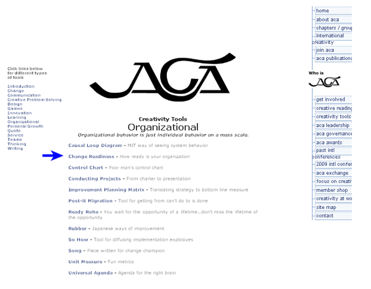In previous posts, I have commented on how the corporate world is getting increasingly complex. So much so that the current menu of tools and techniques are becoming less effective. I found an interesting article on the website of the Australian Graduate School of Management (Read the article – edit: no longer available).
One of the defining abilities for 21st century managers is how they deal with ‘wicked problems’ – that is, problems that are socially so complex that they don’t have straightforward answers and for which the past does not prove to be a reliable predictor of the future. Grappling with wicked problems is arguably the greatest and most exciting challenge for today’s manager who needs to adopt new ways of thinking to discover solutions.
And in a 2005 article BusinessWeek mentioned —
What was once central to corporations — price, quality, and much of the left-brain, digitized analytical work associated with knowledge — is fast being shipped off to lower-paid, highly trained Chinese and Indians, as well as Hungarians, Czechs, and Russians. Increasingly, the new core competence is creativity — the right-brain stuff that smart companies are now harnessing to generate top-line growth. The game is changing. It isn’t just about math and science anymore. It’s about creativity, imagination, and, above all, innovation.
No wonder that corporate recruiters are increasingly hiring MFAs instead of MBAs. Companies are also looking into how to promote creativity in their organizations. The CEO and the C-suite must set the tone at the top that encourages a creative corporate culture. Other initiatives are to back this up with with rewarding creativity via special awards (3M) and as components of the compensation plan (GE). See other techniques in the table below.
| COMPANY | CREATIVITY PRACTICE |
| Toyota | Is best known for an obsessive focus on innovating its manufacturing processes. |
| Procter & Gamble | Transformed its traditional in-house research and development process into an open-source innovation strategy it calls “connect and develop.” It embraces the collective brains of the world…. inventors, scientists, and suppliers for new products that can be developed in-house. |
| 3M | Awards “Genesis Grants” to scientists who want to work on outside projects. Each year more than 60 researchers submit formal applications to a panel of 20 senior scientists who review the requests, just as a foundation would review academics’ proposals. Twelve to 20 grants, ranging from $50,000 and $100,000 apiece, are awarded each year. The researchers can use the money to hire supplemental staff or acquire necessary equipment. |
| General Electric Co. | Has begun evaluating its top 5,000 managers on “growth traits” that include innovation-oriented themes such as “external focus” and “imagination and courage.” GE has also added more flexibility into its traditionally rigid performance rankings. |
| Infosys Technologies Ltd | Chairman and “chief mentor” N.R. Narayana Murthy introduced the company’s “voice of youth” program seven years ago. Each year the company selects nine top-performing young guns — each under 30 — to participate in its eight yearly senior management council meetings, presenting and discussing their ideas with the top leadership team. |
| Adapted from Businessweek “Most Innovative Companies” | |
I found a good website America Creativity Association with many great resources. If you are just starting to use creativity in your organization, take the Readiness Test.
Another good site is CREATE There are good examples of managing creativity, techniques and case studies. An added benefit: no ads.
Now get those creative juices flowing.
Ed Konczal has an MBA from New York University's Stern School of Business (with distinction). He has spent the last 10 years as an executive consultant focusing on human resources, leadership, market research, and business planning. Ed has over 10 years of top-level experience from AT&T in the areas of new ventures and business planning. He is co-author of the book "Simple Stories for Leadership Insight," published by University Press of America.

